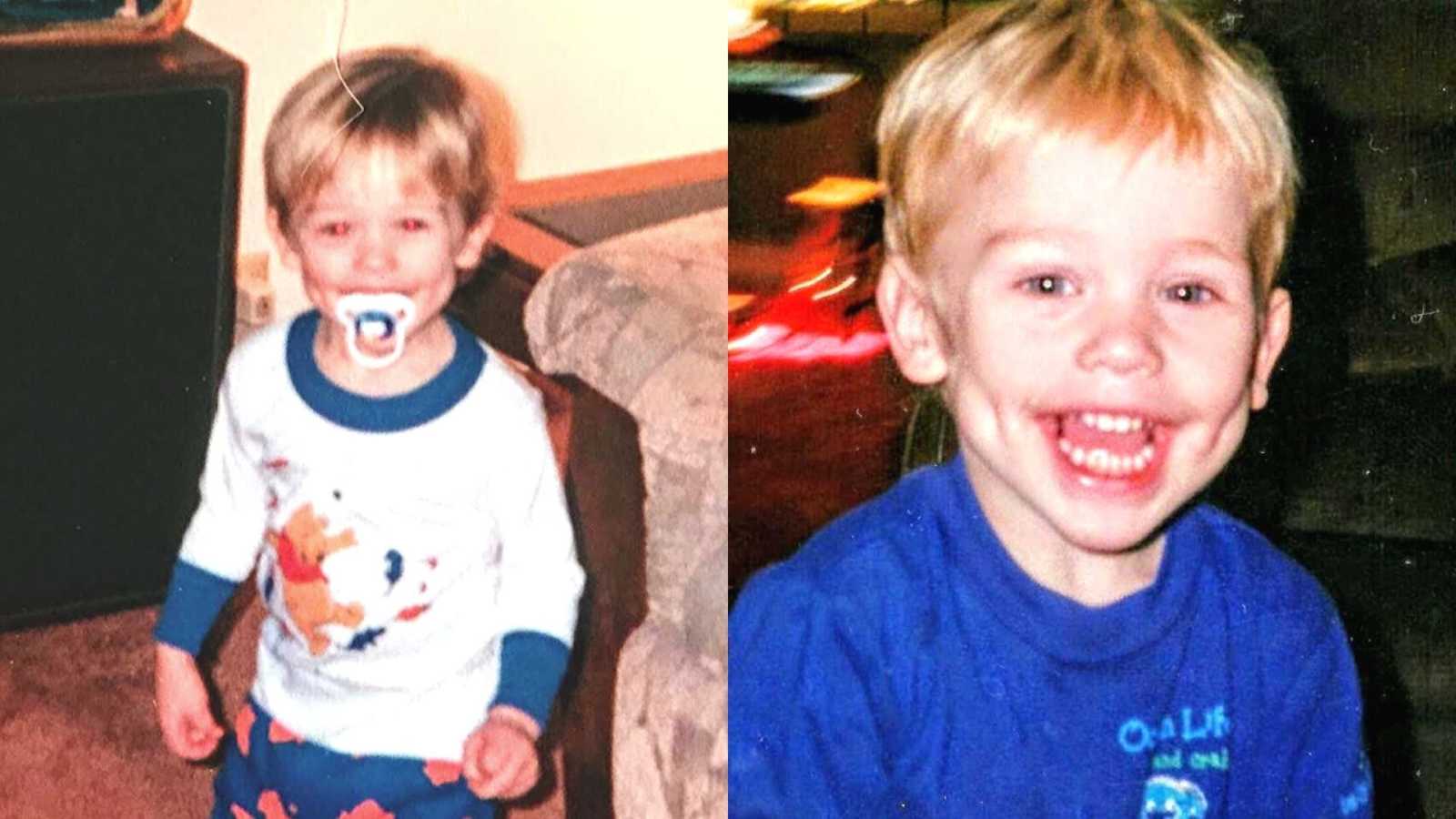“Everyone has a story that makes them who they are. Life’s experiences will form you with each defeat, each triumph, each moment of love or kindness, and each broken heart. Some people will crumble under the pressure, and some people will rise above it all. I always dreamed that I would be the one to guide my children in life, and I think I did that…but in reality, it is my son who has guided me.
I married the love of my life in 1990 and gave birth to our first healthy son in 1991. Tyler was an angel. He rarely cried unless he was hungry, and slept through the night when he was just 2 weeks old. Throughout his first few years, we spent our days reading stories, snuggling, singing songs, playing outside, and learning new things every day. He was a dream baby and I couldn’t wait to have another. My husband was a little more hesitant. He loved our firstborn so deeply that he wasn’t sure he could love another as much. He couldn’t even fathom it. Naturally, I won that argument. I was due to have our second son at the end of January, 1996.

When our sweet Grant was born, they put him near my face for a moment, but he was having a little bit of trouble breathing. The on-call pediatrician whisked him away. The moment had not gone quite how I had imagined. I had imagined family photos of our smiling faces gazing upon our new baby. I never could have dreamed I would not even be able to hold him until he was a week old.
As luck would have it, the pediatrician just happened to be new to the area, and also just happened to be a lung specialist…Miracle #1. Grant was not actually ‘ready’ to be born. He lacked enough surfactant to be able to breathe without tearing a hole in his lung. The pediatrician tended to him non-stop and as our baby deteriorated, he placed in a chest tube to deal with his lung, which had collapsed under the pressure.
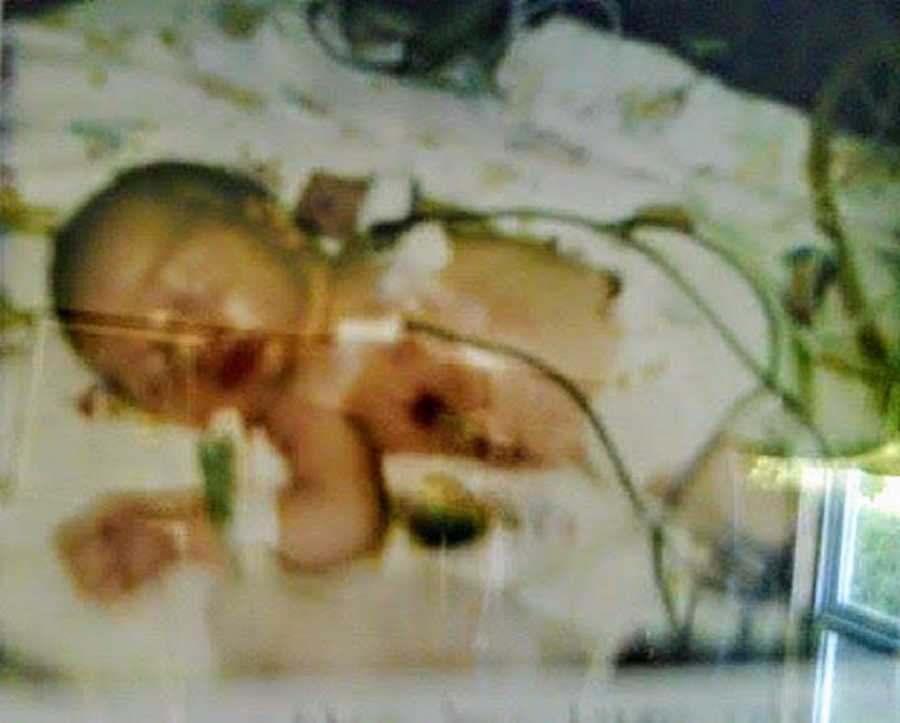
During all of this, I was recovering from surgery and still hadn’t been allowed to go to him. After being wheeled to my room, I got out of bed determined to head to the nursery to see my baby. The nurses intercepted me and realized that I was going to go, no matter what, so they helped me into a wheelchair and wheeled me to him. I was not prepared for what I was going to see. He was so limp. What had I done? In my excitement to meet him, I had allowed a doctor to schedule his birth before he was actually due.
It became clear that Grant was crashing and a PANDA unit was called in from the nearest NICU about 2 hours away. I waited anxiously in my room. My husband and I both immediately agreed he would go with him since they were not going to release me. The team pushed his transport bassinet into my room to say goodbye. I just couldn’t wrap my head around what I was seeing. There were so many tubes everywhere. One of the team members handed me a Polaroid and said, ‘This is to remember your baby by.’ I was stunned and speechless, reaching my hand out for it. They wheeled him away and I wondered if I was ever going to see him again. I’m pretty sure the nurse handing me the Polaroid didn’t think I was ever going to see him again.
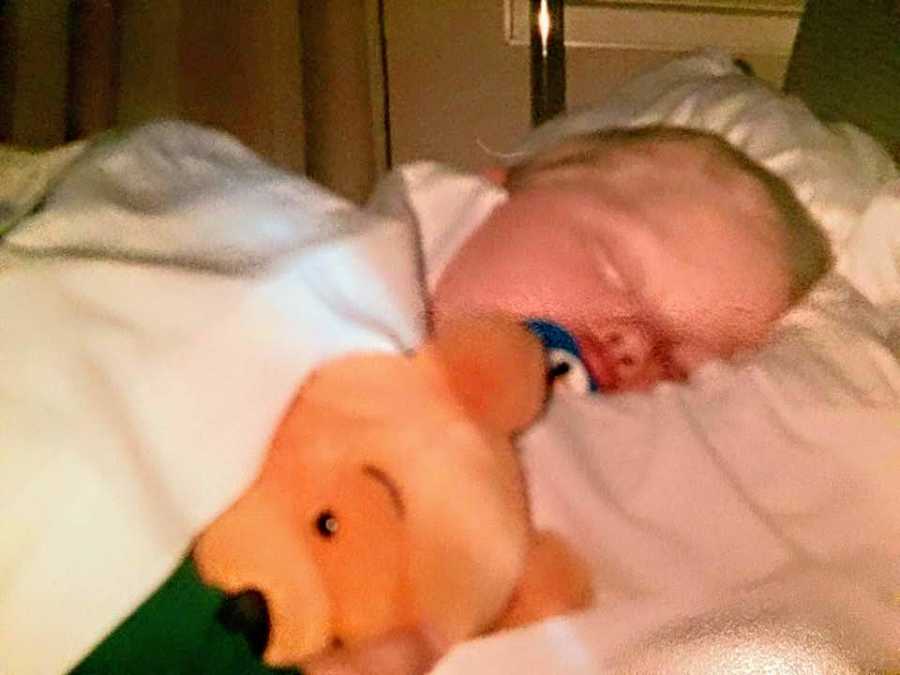
When I spoke with the neonatologist, I learned that Grant had coded in the ambulance on the way up. They were working to get him stabilized on the ventilator and preparing to give him some blood transfusions. Every check-in was met with the same apprehension from the team, and I was told to be prepared. Things were not looking good, and he was likely not going to survive. I can’t even tell you what that feels like, especially when you are blaming yourself for what your child is enduring. How could I be so stupid? Why didn’t I ask more questions? In a time when we had no cell phones, and no internet, I just blindly trusted the surgeon.
I checked myself out, against medical advice, and arrived in Eugene to meet up with my husband at the hotel so we could head to the NICU together. I found him sitting in the shower with his head in his hands. He looked at me and I could see the tears even through the droplets of water that were streaming down his face. He said, ‘My baby, my poor baby…there’s nothing I can do,’ and we both sobbed together.
We pulled ourselves together and headed to the hospital. Grant was about as close to death as I imagine a baby could be, yet in that moment, I felt an inner peace that led me to believe he was going to be okay. His name was flying through prayer chains like crazy, and people were showing up in the waiting room to pray for him too. Through many interventions and too many X-rays to count, he slowly began to improve, and the day came when I was able to hold him for the first time. Soon, we were on our way home to be together as a family again…Miracle #2.
For around 18 months, Grant was pretty healthy. I was in for a rude awakening however, because he was not even remotely as chill as his brother had been. I had been spoiled. In retrospect, I realize that his stubbornness, strong will, and determination, would serve him well in the battle he was going to be facing ahead. Grant began to have issues that at first we chalked up to just normal ‘toddler stuff.’
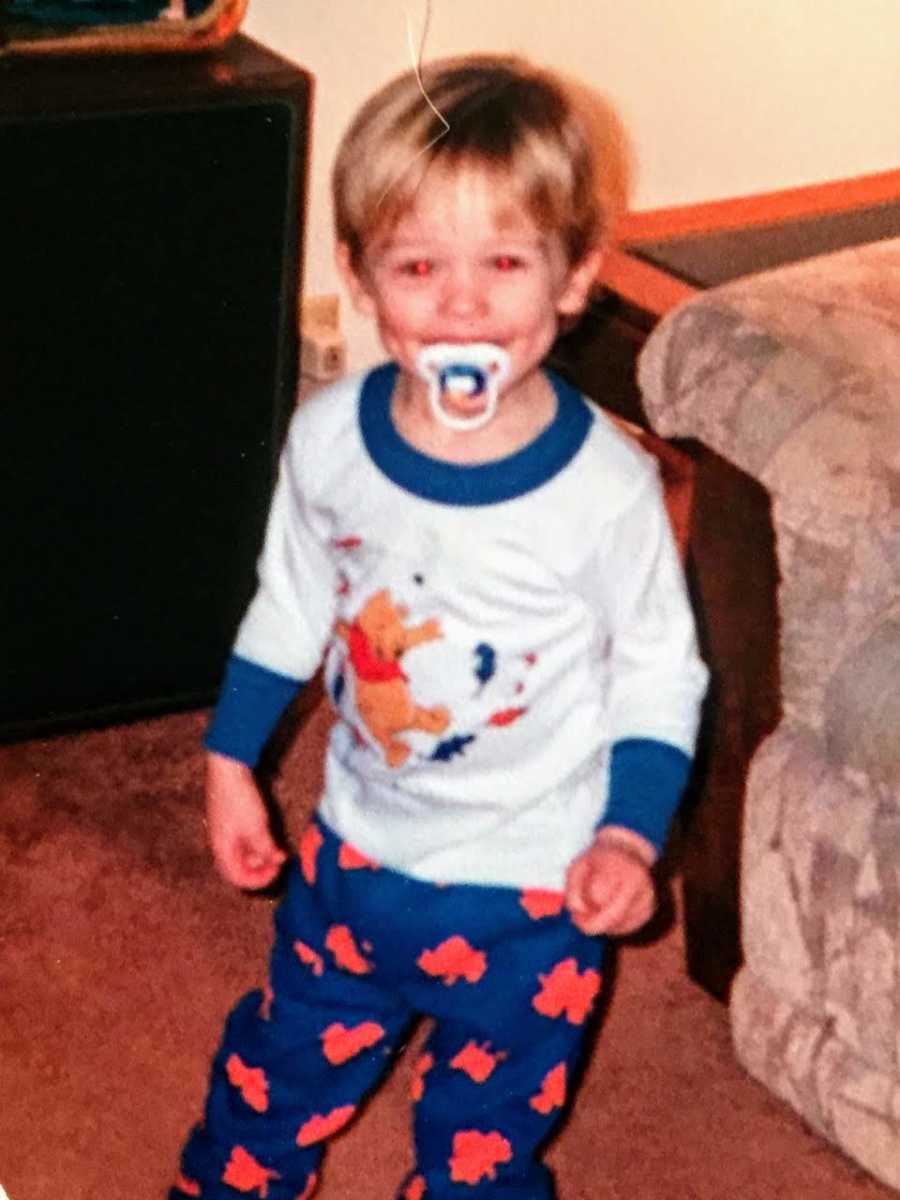
I took him to our family physician and went through the whole Insurance HMO process to get a CT scan done. The CT was normal, so we decided he might be suffering from night terrors or migraines which ran strongly in his daddy’s family. But something still didn’t feel ‘right.’ My wonderful doctor had a firm belief in mother’s intuition and went to work trying to get him in to see a pediatric neurologist. We finally got everything coordinated after a lengthy period and headed out of town for his appointment. Poor Grant had been suffering for all of this time and we had to pull over on the side of the interstate as he had another ‘attack,’ screaming and projectile vomiting all over the road.
An MRI was done and the anesthesiologist mentioned a lesion. Lesion? What does that mean? Did he scar his brain with all of those falls? All I could do was wait to take the sealed MRI films to the neurologist’s appointment the following day. Like I said, I had no cell phone, and no internet…only my mind to imagine all of the possibilities.
The next day at the neurologist’s office, the doctor came in smiling and gregarious and feeling instantly relieved, I let out the breath I didn’t realize I was holding. The relief went away as soon as he asked me if I had the MRI films with me, and I realized he had not actually reviewed them yet. The second time he came in, his demeanor had totally changed. He sat across from me and said he had reviewed the films, and was sorry to have to tell me this, but that my baby had a brain tumor. I was in disbelief. What? WHAT?! I looked at my baby enthusiastically playing with the Tonka trucks on the floor and tears started streaming down my face.
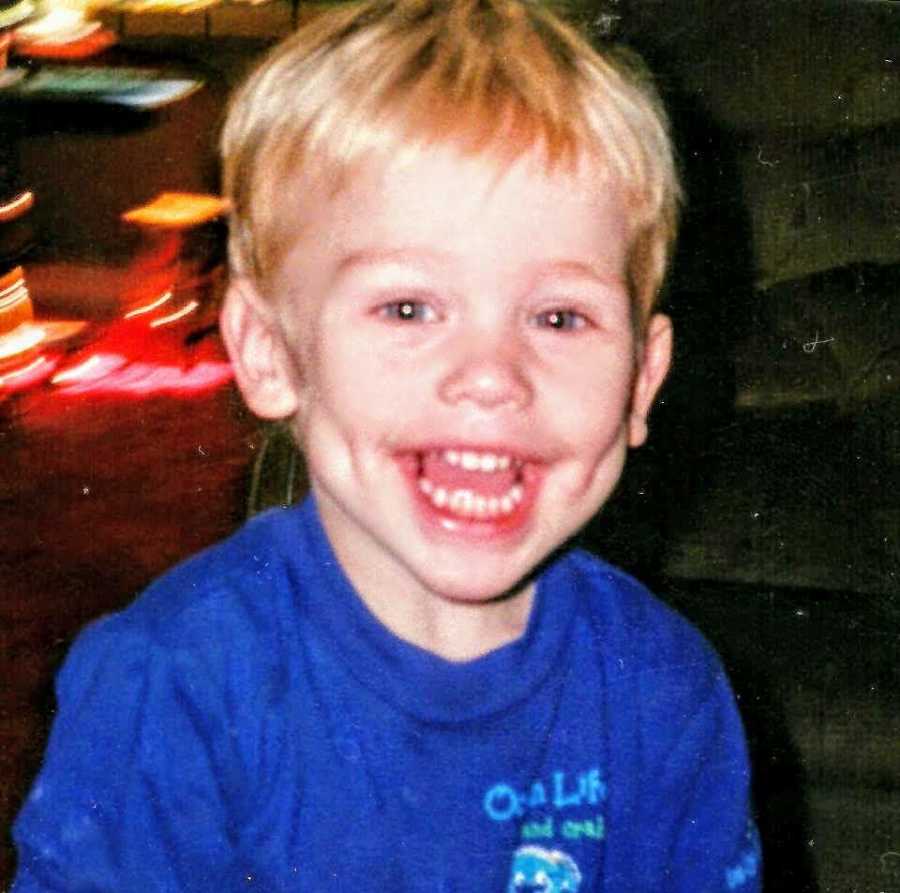
He took me out to show me the unmistakable blob in the middle of the film then we returned to the exam room. Through my tears, he tried to explain everything that was going to happen once Grant was referred up to the Children’s Hospital. His words went in one ear and out the other…but one thing will be burned into my brain forever. He looked me square in the eye and said, ‘I’m very sorry, but I think we both knew it was something like this…’ WHAT? Are you freaking kidding me? No. No, I didn’t.
The next couple of days were a whirlwind. We all knew Grant was dying. Unfortunately, the lengthy surgery ended in disappointment. Although the neurosurgeon had done his best, it was just too dangerous to proceed and he had to tell us the tumor was inoperable. He asked for permission to place a central line (kind of an internal IV that allows them to access it through his chest) and introduced us to a neuro-oncologist who he said would try to prolong his life with chemotherapy.
We agreed and spent Thanksgiving Day watching him endure excruciating attacks that had not stopped because the tumor was still there, only this time he was enduring them with a healing skull and chemotherapy that was making him very sick. He was already so frail that we didn’t believe he could survive long enough to complete all of the rounds he would need over the next year.
The mama bear in me kicked in. I was not going to sit around and watch my child die after all he had already been through. I got photocopies of all of his chart notes (yes, like I said, this was before the digital age). I had copies of his actual MRI films made, then my family bought us a new Radio Shack Compaq computer, and I signed up for dial up internet (talk about TORTURE!). Day in and day out, I sat at my desk researching treatment options and clinical trials while simultaneously trying to keep life as normal as I could for both of my children. I personally contacted every single brain tumor program and clinical trial in the country and Fed Exed more chart notes and MRIs than I can count, but I just kept coming up against brick walls.
Time and time again, Iwould hear that it can’t be done, he’s too young, it’s too dangerous, or that he was already receiving the chemotherapy trial they would have put him on. That is…until one pioneering neurosurgeon at NYU Medical center called me. He reviewed Grant’s case and had taken it before his tumor board. He told them he believed he could successfully remove most of it with their new technique and they agreed. ‘I hate to bring you all the way across the country, but I really believe I can do this,’ he said, and I believed him. Finally, we had some hope and I started to believe Grant could actually survive this.
Surgery was scheduled for December 30th, the day after Grant’s 2nd birthday, but insurance refused to pay. Not only was this outside of the normal standard of care, but it was also outside of our network. On Christmas Eve, we got the phone call from our HMO that they had decided to cover the surgery after all. We were in business…Miracle #3. We arrived in the Big Apple two days later and after getting over the culture shock (having come from rural and coastal Oregon) we settled in for what was to come.
The day came when we would have to hand our toddler over to have scalpels slicing through his flesh, power tools sawing through his skull, and a skilled surgeon’s hands meticulously removing a tumor that was killing our son, piece by piece. They told me they preferred for a parent to take the children in because it helped with anesthesia to keep the child calm. I will never forget what it felt like to dress in a ‘bunny suit’ and to carry my son down the hall into the operating room.
I glanced around the room, seeing tools peeking out from underneath drapes and realizing that this could in fact be the last time I ever saw my son. I kissed his head, laid him on the table, and turned to walk away. Hours and hours passed and the nurse came out to let us know that things were going well. Hours more passed and the surgeon appeared. The impossible had become possible. He had been able to successfully remove about 95% of the tumor…miracle #4! Our son was going to live!
Day in and day out, I stared out of the PICU window at the Chrysler building holding and rocking my child and thanking God for leading us to this place. It was a rough time as he recovered and the numerous doctors worked out what would turn out to be a lifelong medication plan, but at least we knew he would survive. Toward the end of January, we were heading back to Oregon with a plan including detailed medication schedules, MRIs every three months and close monitoring by his oncology team at home. For a year, everything was stable and they removed his central line. We were able to stretch the MRIs out to six months, but unfortunately that next MRI showed that the tumor had returned and had doubled in size.
I can’t say I was really all that shocked when his oncologist delivered the news. I had suspicions based on some of his symptoms, but I wanted to believe he was just having residual issues. This time, however, we all felt more prepared for what was to come, and we felt sure that Grant was now healthy enough to survive it.
Grant was started on the same chemotherapy trial he had started 18 months earlier and it would end up lasting for about a year and a half. One of the hardest moments of that journey was enduring what felt like the ultimate betrayal of a mother to her child. A surgical resident had botched his central line placement and after the nurses were unable to access it with the needle (in a painful fresh incision), they were forced to call in IV therapy to try.
By then, he was over it, and one of his flailing arms escaped them and he reached out to me, with his tear streaked face, covered in sweat, and pleaded, ‘Help me mama, pleeeeaaase, help me!’ That was it! I was done. I found my voice on that day. Never again was I going to just accept what a doctor said without question. I knew the nurses and IV therapy team were distressed too, and I calmly said, ‘That’s it. We are done for the day. I want to see the surgeon.’
After a surgical attempt to adjust the poorly placed port, he ended up needing a third surgery. This time they placed a Hickman which would allow the central line to hang on the outside of his chest. This eliminated the need to access it with a needle, but also meant no more swimming or playing in the bathtub, and the need to learn how to care for it at home. When something is hanging on the outside of your body with a direct line to your heart, you have to keep it dry and sterile. You also need to flush it to make sure clots don’t develop. No pressure or anything…especially with a very active preschooler, right?
On the day they placed it, I sat in the pre-op area signing consent forms and without hesitation I wrote in large letters across it, ‘NO STUDENT OR RESIDENT IS TO TOUCH HIM’ and signed beneath it. Not that I have anything against them learning, they obviously have to learn somehow, I was just done having them learn on him. We settled into a routine which included showing up for chemotherapy with stacks of Winnie the Pooh movies, toys, and treats. He lost his hair, he was weak, and he was always sick, but he handled it remarkably well.
One of the hardest things a parent of a sick child with a life-threatening disease will ever have to face will be learning how to say no when it matters. Your instinct is to give them the world, but that really isn’t in anyone’s best interest. Not yours, not theirs…not anyone’s. I intended to raise him the same way I was raising his brother. Same rules, same bedtimes, same chores, and the same expectation of respect regardless of what he was going through.
His chemotherapy treatment successfully shrank his tumor, and at the end of all of that, he also successfully completed a Cognitive Remediation clinical trial that was able to retrain his brain how to process information. In addition, he would need some physical therapy and occupational therapy to assist him with gross and fine motor skills. He had some issues with his immune system and some issues due to both his tumor and its treatment, but he was otherwise pretty healthy until about 12 years old.
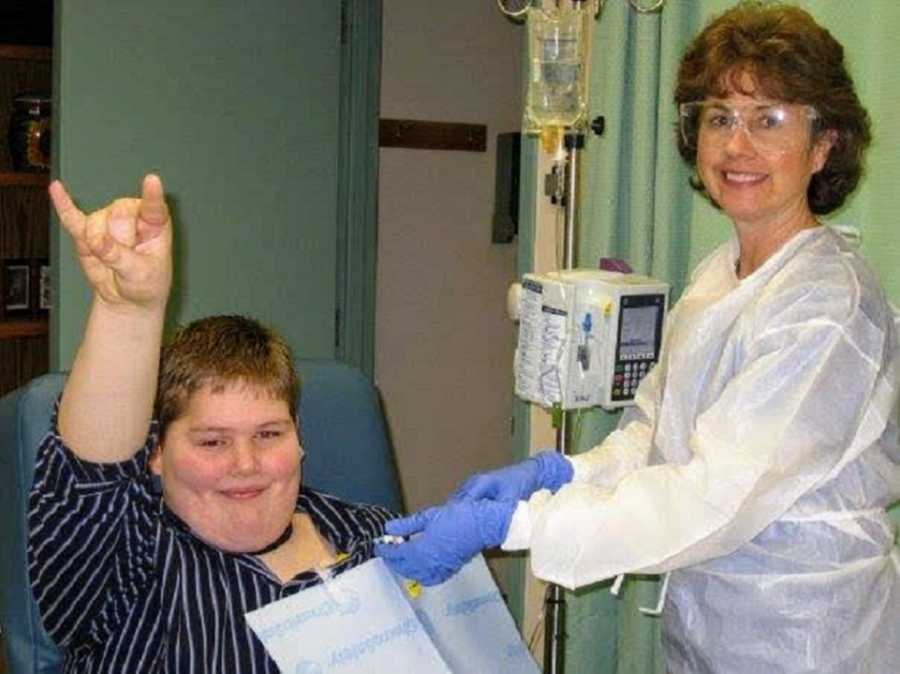
Then came the day that he stopped me in the middle of a large department store…’Mom,’ he said. ‘I can’t see.’ I was confused and replied something like, ‘What do you mean you can’t see?’ He stood planted in the middle of the aisle and stated again, ‘I. Can’t. See.’ I stood there, unsure what to do, but it seemed to come back after a minute or two. Concerned, we set up an appointment with the ophthalmologist but never considered the unthinkable. After a prescription for some glasses and a couple of lens adjustments, a third trip back showed a clear difference in his vision, so the ophthalmologist decided to do a visual field test.
Grant’s results were very concerning and we were heading back to the Children’s Hospital for a visit with a neuro-ophthalmologist who ordered an MRI that same day. Unfortunately, the trip ended with us back at his oncologist planning out the next year of chemotherapy and another port placement. He was an old pro at the whole treatment thing by now, (and was a lot more compliant as a teenager) but he was in totally new territory with the progressive loss of his vision during it.
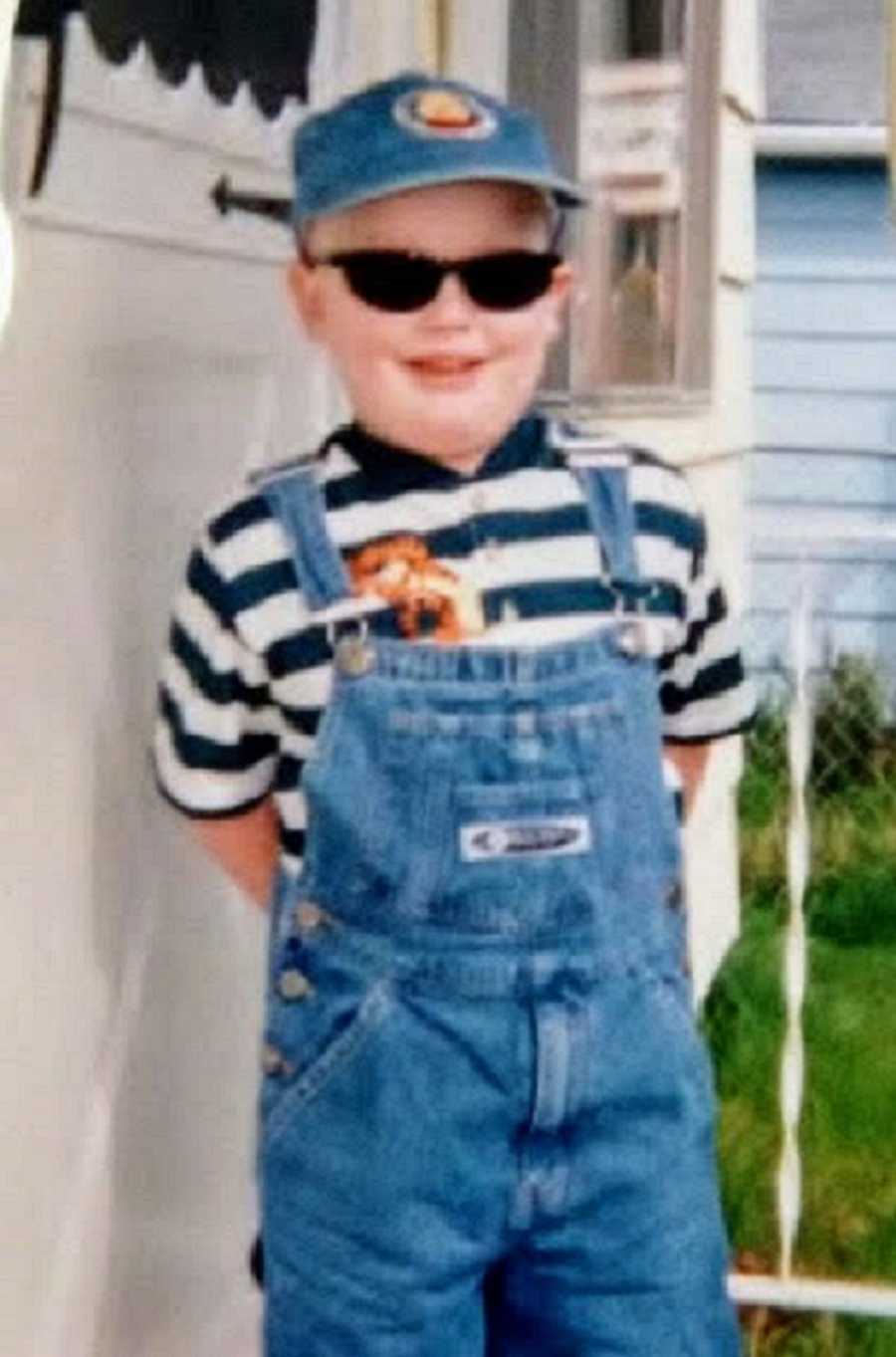
Grant approached his treatment with an unbelievably positive attitude and threw himself into his studies determined this overcome this new obstacle too. The best way to explain his vision loss is to tell you to close one eye, and then hold a fist up to your other eye with a small hole through the middle of it. Look through it, and then imagine it’s also a little blurry. That’s what he can see.
He can see the big E on an eye chart with one eye, but it’s nothing but a blur with the other. Obviously navigating without a cane when there are unfamiliar obstacles, and uneven surfaces all around you, (with that kind of vision, or lack thereof), is foolhardy. Insert stubborn teenager here. It took a fall down some stairs and a knee surgery to remind him that he was not invincible, but after his knee and his bruised prided healed, he embraced his new existence and learned how to navigate with it like a champ.
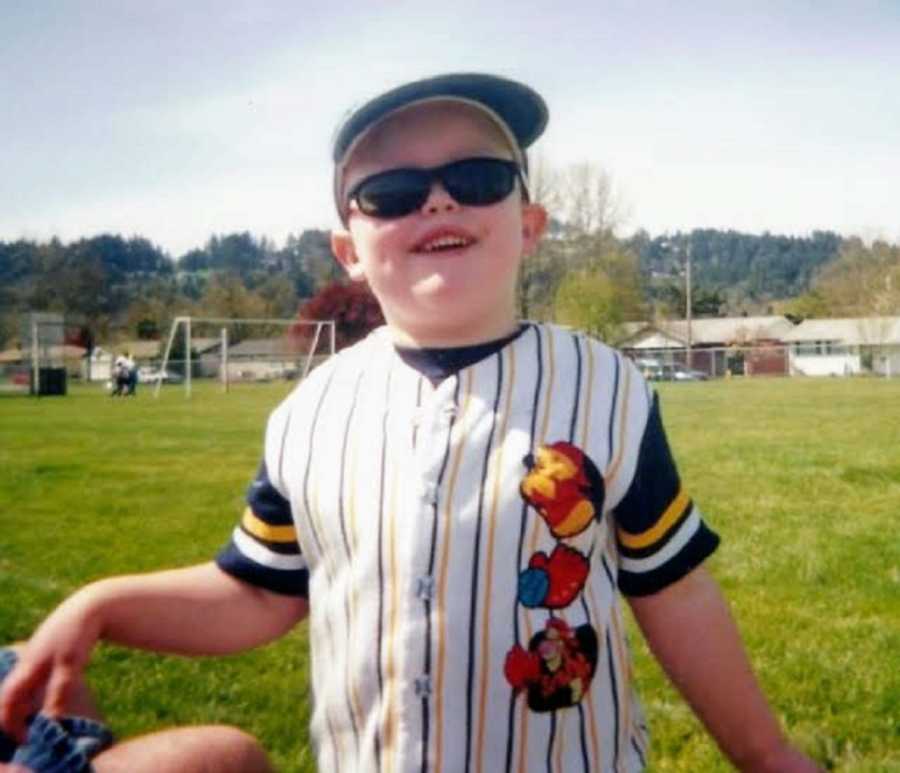
On January 21st, 2009, Grant received his last chemotherapy infusion. He has now been stable for 10 years and has done amazing things with his life. This baby who was not supposed to survive his first day, has now survived that AND successfully battled brain cancer three times. This Kindergartner whose teacher was unsure could learn any further, graduated as the valedictorian of his high school class in 2015, will be graduating this December from Arizona State University summa cum laude with a degree in Organizational Leadership and a minor in Sociology, and is then continuing on to his Master’s degree in Communications.
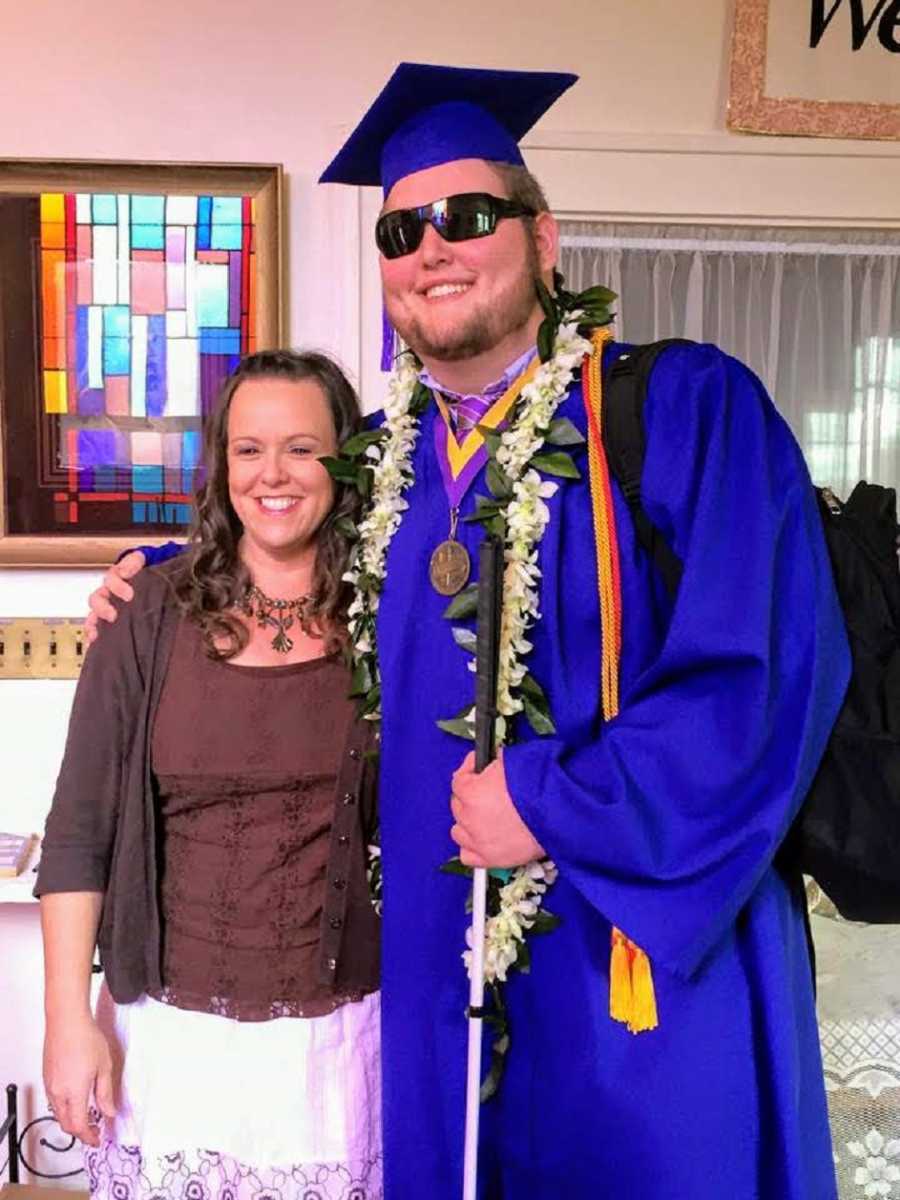
This teenager who overcame a third battle with a brain tumor that left him permanently visually impaired, turned his pain into a passion to help others, serving in multiple local, regional, national and global volunteer roles for the American Cancer Society and has raised over $100,000 for the fight against cancer. He is also working vigilantly to realize his dream of raising $165,000 in 2020 to fund a pediatric cancer grant through his #GoldTogether Relay For Life team.
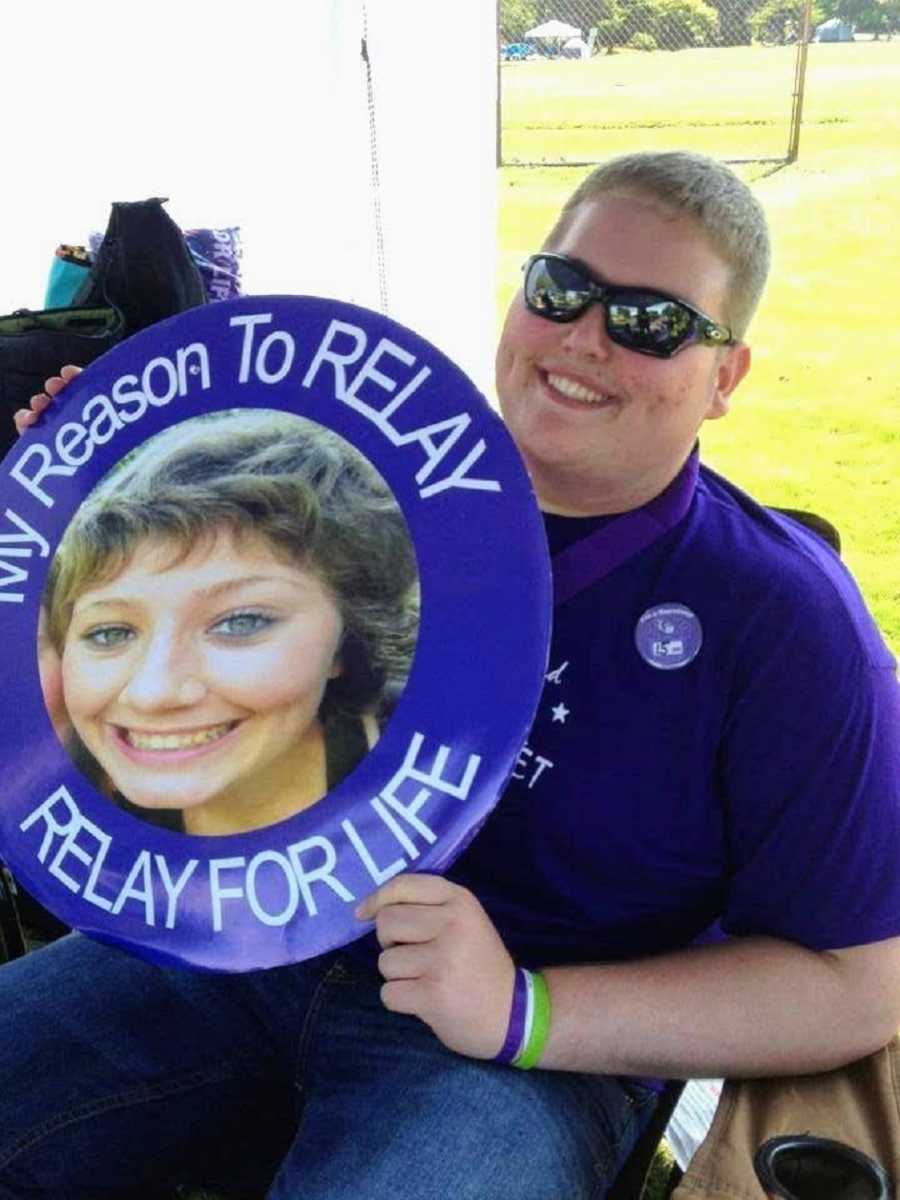
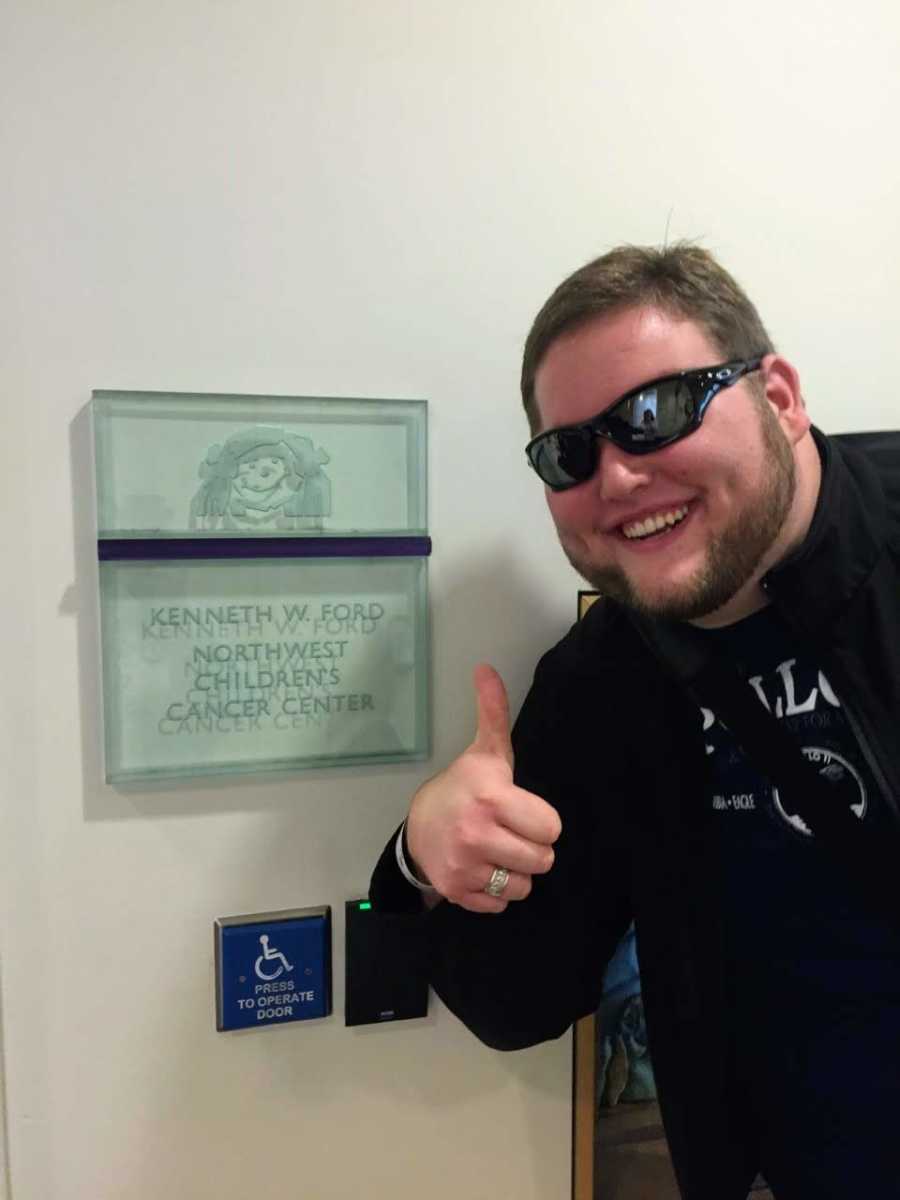
I could not be any prouder to see the loving, empathetic, kind-hearted and determined man he has become. Whatever stubborn willfulness he was born with that first day, has carried him through to where he is now. He doesn’t make excuses for himself. He never cries, ‘Why me?’ He just lives the best life he possibly can, every day that he possibly can, and truly embraces his favorite quote:
‘The most pathetic person in the world is a person who has sight, but no vision.’ – Helen Keller.
My son…is my hero.”
From podcasts to video shows, parenting resources to happy tears – join the Love What Matters community and subscribe on YouTube.
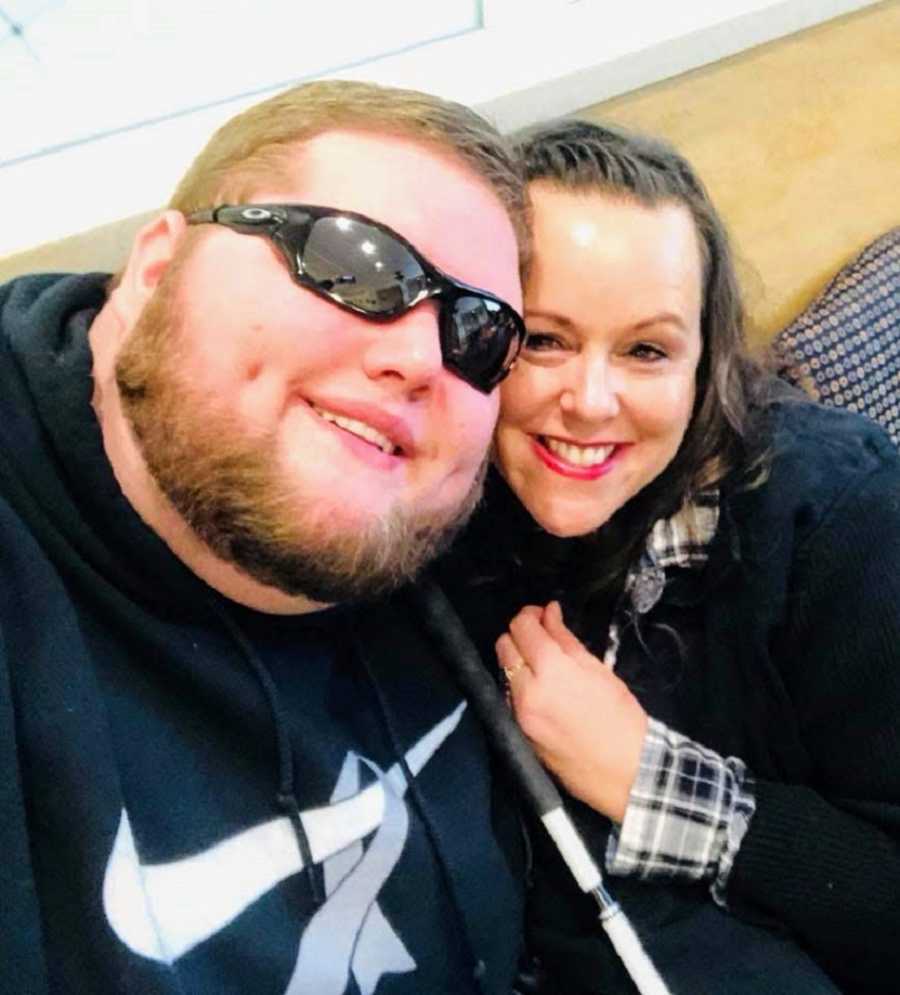
This story was submitted to Love What Matters by Becky Crim of Coos County, Oregon. You can follow Grant’s journey on Facebook. Submit your own story here and be sure to subscribe to our free email newsletter for our best stories.
Read more stories like this:
Spread beauty and strength for others. SHARE this story on Facebook with family and friends.

